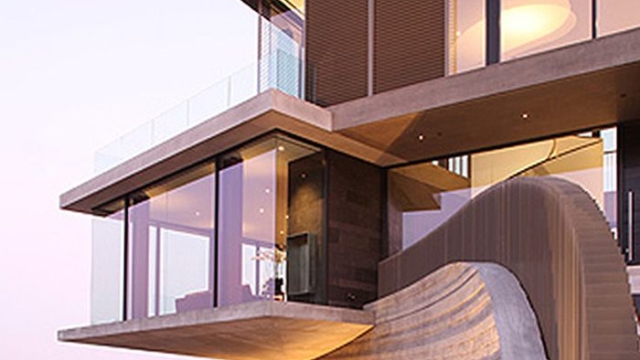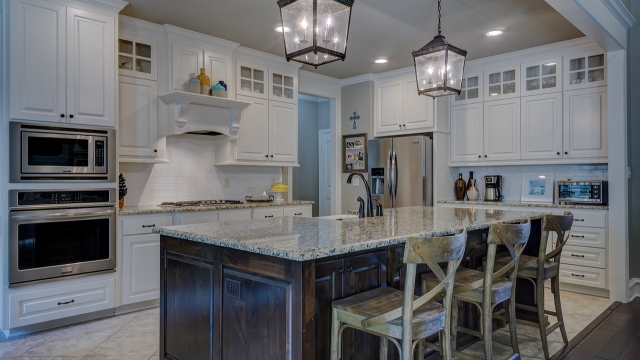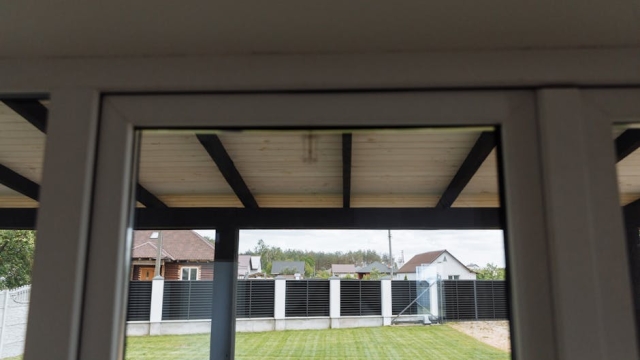
Blurring Boundaries: Where Architecture Meets Interior Design
Architecture and interior design have long been recognized as distinct disciplines, each contributing its own unique expertise to the creation of immersive spaces. However, in recent years, we have witnessed a significant shift in the way these two fields intersect and collaborate. Blurring the boundaries, architecture and interior design are now merging together, forging a powerful partnership that pushes the boundaries of creativity, functionality, and aesthetics.
As architectural concepts evolve, the once-clear delineation between the exterior and the interior is increasingly being challenged. Architects are now approaching their designs with a holistic mindset, considering how the external environment seamlessly merges with the internal spaces. The result is a more fluid and integrated approach to architecture, where the boundaries between inside and out fade away, allowing for a harmonious blend of natural and built elements.

Similarly, interior designers are breaking free from the confines of traditional interior spaces and embracing the larger architectural context. No longer solely focused on furniture and finishes, they are now actively involved in shaping the overall spatial experience, collaborating closely with architects to ensure that form, function, and aesthetics align seamlessly. By working hand in hand, architects and interior designers bring their distinct perspectives together, enriching the design process and creating spaces that are not only visually stunning but also functional and purposeful.
In this article, we will delve deeper into the fascinating world where architecture and interior design converge. We will explore the symbiotic relationship between these two disciplines, examining how they collaborate and complement each other to create immersive environments that leave a lasting impact. From innovative architectural concepts that blur the lines between inside and out to interior design schemes that seamlessly integrate with the overall architectural vision, we will discover the endless possibilities that arise when architecture and interior design unite their unique strengths. So, join us as we embark on a journey through this exciting realm where boundaries are blurred and creative possibilities are boundless.
Exploring the Overlapping Elements
In the realm where Architecture meets Interior Design, a beautiful fusion of creativity and functionality takes place. The lines between the two fields blur, giving way to a seamless integration of structural design and interior aesthetics.
Interior Design
At the core of this convergence lies the shared goal of creating engaging spaces that cater to both practicality and visual appeal. The architect’s vision takes shape through the design of the building, while the interior designer adds their touch to transform the space into a welcoming and purposeful environment.
One key element that exists at the intersection of Architecture and Interior Design is the concept of spatial planning. Architects consider the overall layout of a building, focusing on factors such as circulation, functionality, and structural integrity. Interior Designers, on the other hand, zoom in on the arrangement of furniture, fixtures, and finishes within a given space. Together, they collaborate to ensure that the spatial organization flows harmoniously, enhancing the overall user experience.
Another crucial aspect is the use of materials and finishes. Architects carefully select materials that align with the project’s vision, considering factors like durability, sustainability, and aesthetics. Meanwhile, Interior Designers play with colors, textures, and patterns to create a cohesive and visually appealing interior atmosphere. The choices made in terms of materials and finishes directly impact the way a space looks and feels, making it a vital point of synergy between both disciplines.
Lighting design is yet another pivotal aspect where Architecture seamlessly merges with Interior Design. Architects strategically integrate natural light sources, such as windows and skylights, into their designs to create a connection between the built environment and the outside world. Interior Designers take this notion further by incorporating artificial lighting solutions that emphasize the intended ambiance and highlight the architectural elements present within the space.
In conclusion, the intersection of Architecture and Interior Design reveals a dynamic blend of artistic vision, technical expertise, and functional considerations. The overlapping elements encompass spatial planning, materials and finishes, as well as lighting design. By recognizing and appreciating the interconnectedness of these disciplines, we gain a deeper appreciation for the beauty and intricacy of the built environment.
Impacts on Functionality
The intersection of architecture and interior design has a profound impact on the functionality of a space. By seamlessly integrating the two disciplines, designers can create environments that not only look visually appealing but also serve their intended purpose efficiently.
Firstly, when architecture and interior design work hand in hand, the layout and flow of a space can be optimized to enhance functionality. Architects consider factors such as building codes, structural requirements, and site conditions, while interior designers focus on how the space will be used and the needs of its occupants. By collaborating effectively, they can ensure that every square foot is utilized effectively, allowing for smooth traffic flow and easy navigation.
Additionally, the choice of materials and finishes has a direct influence on the functionality of a space. Architects and interior designers collaborate to select materials that are not only aesthetically pleasing but also durable and suitable for the intended use of the space. For example, in high-traffic areas, slip-resistant flooring materials may be incorporated to enhance safety and functionality.
Lastly, lighting and acoustics play a crucial role in the functionality of a space. Architects consider natural light sources and integrate them into their designs, while interior designers strategically position artificial lighting fixtures to optimize visibility and create ambiance. Similarly, sound-absorbing materials and strategic placement of acoustic panels are carefully considered to minimize noise and create a comfortable environment.
In conclusion, the collaboration between architecture and interior design greatly impacts the functionality of a space. Through careful consideration of layout, material selection, lighting, and acoustics, designers can create spaces that not only look aesthetically pleasing but also cater to the needs of its occupants efficiently.
Collaboration and Innovation
Collaboration and innovation are key aspects when it comes to blurring the boundaries between architecture and interior design. The intersection of these two disciplines not only requires a seamless collaboration but also encourages the exploration of new ideas and approaches.
Architects and interior designers often work hand in hand throughout the design process, combining their expertise to create spaces that are not only aesthetically pleasing but also functional and practical. By collaborating closely, they can bring together their distinct skills and perspectives to enhance the overall design concept.
Innovation plays a vital role in this collaborative process. The merging of architecture and interior design allows for the exploration of innovative techniques and materials. From incorporating sustainable materials and energy-efficient systems to utilizing technology in creative ways, the combination of these disciplines opens up endless possibilities for pushing the boundaries of design.
Furthermore, this collaboration fosters innovation in spatial planning. Architects and interior designers work together to ensure that the spatial layout seamlessly integrates with the overall architectural design. This integration allows for the optimization of space, creating harmonious environments that maximize functionality and user experience.
In conclusion, the synergy between architecture and interior design thrives on collaboration and innovation. By working together, architects and interior designers can create spaces that not only defy traditional boundaries but also push the envelope of design possibilities. Through their joint efforts and innovative approaches, they elevate the relationship between architecture and interior design to new heights.



